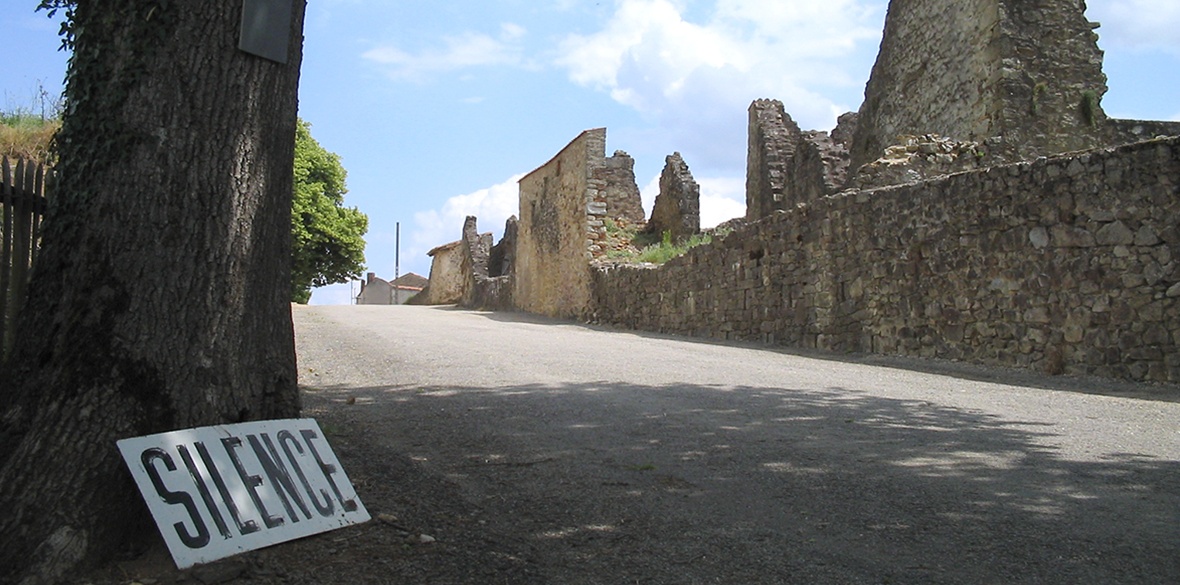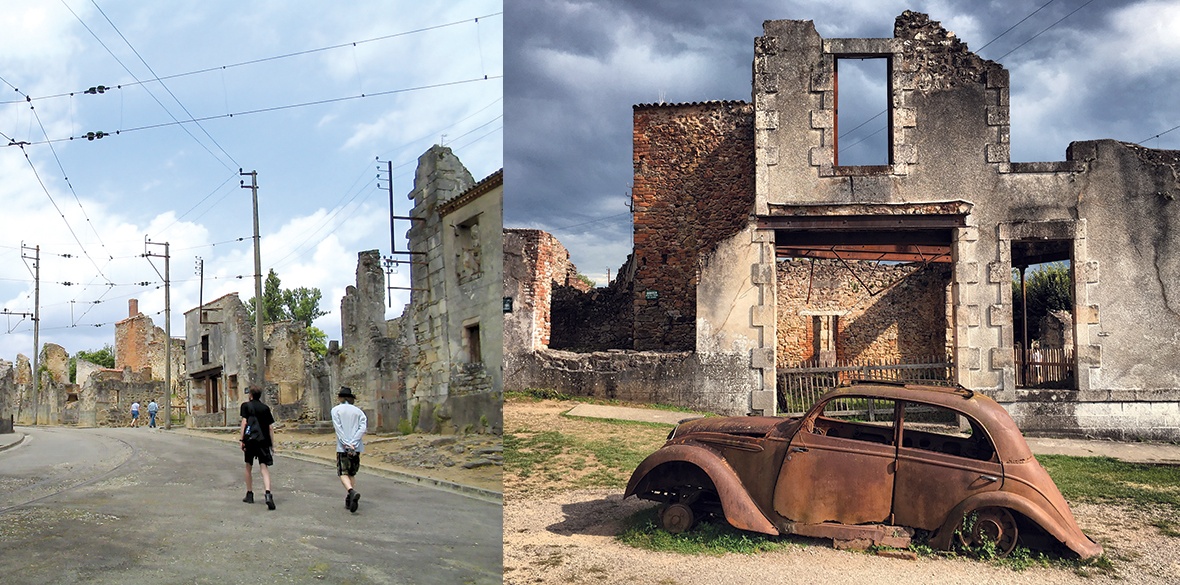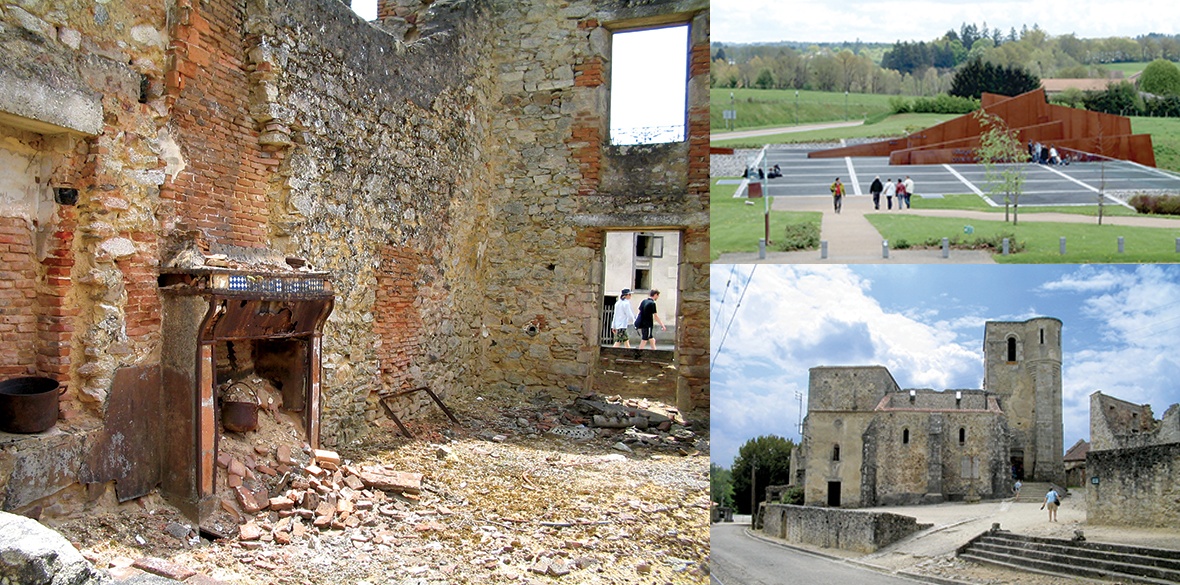This is the last article you can read this month
You can read more article this month
You can read more articles this month
Sorry your limit is up for this month
Reset on:
Please help support the Morning Star by subscribing here
ART IN THE OPEN / ORADOUR-SUR-GLANE MASSACRE MEMORIAL
A SIGN at the entrance to the ruins of the Oradour-sur-Glane village exhorts visitors to keep a respectful silence during their stay. With good reason.
In the afternoon of June 10 1944, the 4th SS Panzer Grenadier Regiment Der Fuehrer, a detachment of the 2nd SS Panzer Waffen-SS Division Das Reich, surrounded the village and massacred 643 of its inhabitants, including 247 children and 245 women. Only 10 people manage to escape.
In an act of utter savagery the men were herded into barns, shot in the legs, doused with petrol and burned alive. Three priests were among them. The church was desecrated and the village looted. That night, it was burned to the ground.
The murder was in retaliation for an attack on a SS unit by the Maquis of the Limousin region.
Two years prior on the same date, June 10, a similar fate befell a Czech village of Lidice.
Following a decision by French president Charles de Gaulle, like Lidice, the ruins of Oradour-sur-Glane have been left untouched and preserved as a permanent memorial and reminder of the Nazi crime against humanity, and a museum and memory centre, designed by Yves Devraine, was built nearby and inaugurated in 1999.
After a long investigation, 21 of the 200 SS men involved were brought to trial in 1953.
Twenty were convicted and two executed. West Germany refused to extradite general Heinz Lammerding, who had given the orders for the retaliation. The commander directly responsible, SS major Adolf Diekmann, was killed in battle in Normandy on June 29 1944 alongside many of his unit.
The last trial of a Waffen-SS member involved in the massacre took place in 1983 in the GDR when platoon commander Heinz Barth was sentenced to life imprisonment. He was released following the reunification of Germany in 1997.
A US airman, lieutenant Raymond J Murphy, hidden by the resistance after being shot down, witnessed the aftermath of the massacre: “About three weeks ago, I saw a town… where some 500 men, women and children had been murdered by the Germans. I saw one baby who had been crucified.”
The last of the survivors Robert Hebras, a campaigner for reconciliation, died on February 11 2023, aged 97.
In the museum watches are exhibited, some stopped by the heat of the fires “marking the last hour these men were alive: between 4-5pm.”
US heavy metal outfit Silent Planet described the massacre in their song Tiny Hands (Au Revoir). Russian writer Ilya Ehrenburg also mentioned the massacre in his 1947 novel The Storm (in print), translated into English in 1948.
In 1976 a film based on the massacre Le Vieux Fusil/The Old Gun, directed by Robert Enrico with Philippe Noiret and Romy Schneider, won France’s national film award, the Cesar, for best film, best actor and best music.
However, in August 2020 the word “LIE” was sprayed on the wall of the museum and the sign “martyr village” crossed out. “Abject filth” and “sacrilegious acts” is how the graffiti were described by government officials.
We are reminded, again, of Bertolt Brecht’s ever-pertinent warning in The Resistible Rise of Arturo Ui: “You have to learn how to see instead of just gawping, and take action instead of jabbering for ever and a day./ For a time he was able to rule the world!/ The peoples defeated him, but none of us should triumph too soon —/ The womb from which he crawled is still in heat.”













